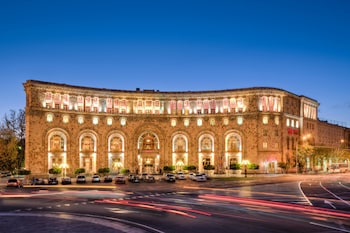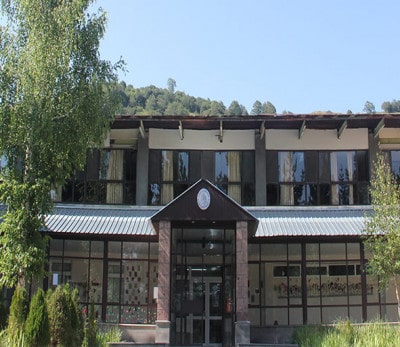In a world with 7,6 billion people (according to the calculation of Worldometers), a nation with a land area of 28,470 Km2 gave the world talented people who changed the life of not only their nation but also the life of the whole world. These gifted people changed the world and made it a better and easier place. They are Armenians, the generation of a nation which is small in its size but big in its ambitions and minds. Being inspired by the Aurora Prize’s article about “100 Armenians who changed the world” the team of Armenia Discovery decided to write about them separately and tell the world what those Armenians have done.
Following the list, we’ve started from the 1st point and wrote about Dame Sian Seerpoohi Elias․ She is the first female Chief Justice in New Zealand. She was born in the United Kingdom (London) in 1949. She has an Armenian father who was born in an Armenian refugee’s family and a Welsh mother.

Elias attended Diocesan School for Girls in Auckland. She graduated from the University of Auckland (1970) and got a law degree. After university, she continued to study At Stanford University. Already in 1972, she got a job at Auckland law firm. At the beginning of her career, she worked as a barrister, also served as a Member of the Motor Sports Licensing Appeal Authority and of the Working Party on the Environment.
From 1984 to 1988 Elias served as a Law Commissioner. She is also known for her work in relation to various Treaty-related cases. She is one of the first two women to be made Queen’s Counsel in 1988. Elias became a judge of the High Court in 1995 and sat on the Court of Appeal.

And finally, Sian was awarded a New Zealand Commemoration Medal in recognition of her services in 1990. On 17 May 1999, she was chosen as a Chief Justice New Zealand, the first woman ever to hold that position. When the government announced plans for the establishment of a Supreme Court, they decided that Elias would automatically be appointed to the new body.

As Chief justice, she also operates the Administrator of the Government when the position is unoccupied or when the current Governor is out of the country. Elias held the position of the Governor from March 22, 2001, until April 4, 2001, and again from August 4, 2006, until August 23, 2006.
Elias is a strong supporter of the rights of aboriginal Maori people. It all started in 1984 when Elias helped Ngāneko Kaihau Minhinnick Manukau Harbour claim to the Waitangi Tribunal.
This led to work on other treaty cases, including as counsel in New Zealand Maori Council Attorney-General and in a claim to prevent the Government from selling radio frequencies, and the case challenging the 1994 Maori electoral option.
Due to this work, she appreciated the Maori custom and aspirations so much, that she still uses them among the judiciary and in her private life. In June 2003 she was involved in a landmark case which allowed for the possibility that the Maori Land Court could issue freehold title over the foreshore and seabed.

(The Right Honourable Dame, Chief Justice Sian Elias is in the middle)
For the next 18 months, she governed the subsequent legal troubles and disorders in Maoridom political agenda. Dame Sian became a member of the Supreme Court on its establishment in January 2004.
Elias is married to Hugh Fletcher, former CEO of Fletcher Challenge and a former Chancellor of the University of Auckland. Hugh Fletcher played a major role in developing the New Zealand industry as chief executive of Fletcher Challenge Company, following the steps of his father and grandfather. Sian and Hugh have two sons Edwin and Benjamin.
“If there were one trait no one who knows her would argue with, it is that she is gracious in all things, even under fire.” – New Zealand Herald

Published January 13, 2018
Article by Lusine Mkhitaryan





